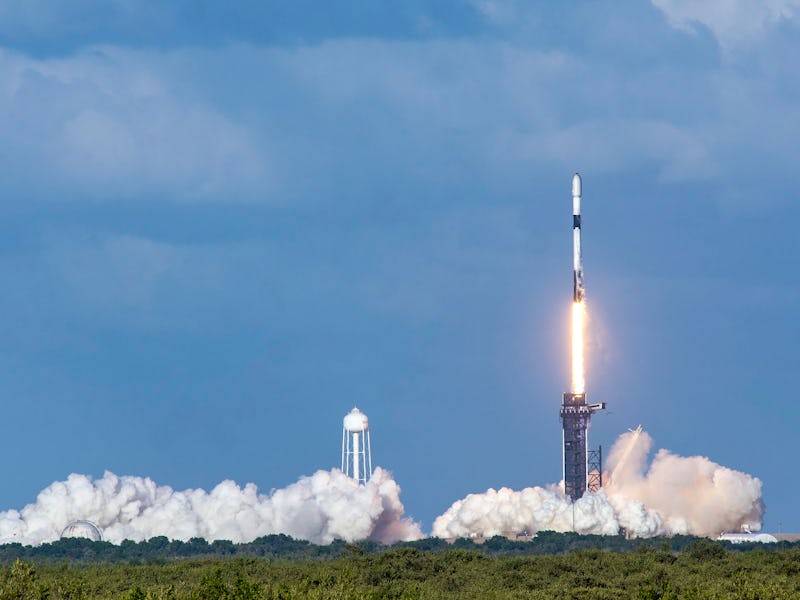Starlink satellites: SpaceX is becoming the iPhone of low-Earth orbit
Alice Gorman, a space archaeologist, says that Starlink symbolizes a new era in space.

SpaceX’s Starlink constellation is getting bigger — and it’s changing the shape of low-Earth orbit.
The firm is currently building out Starlink, designed to offer high-speed and low latency internet almost anywhere in the world. SpaceX has applied for permission to launch up to 42,000 satellites, far outnumbering the total number of satellites in Earth’s orbit. (As of January 1, there are 3,372 orbiting the Earth, according to the Union of Concerned Scientists).
These satellites orbit much closer than other satellite internet constellations. Where telecommunications satellites have traditionally operated in what’s called the geostationary orbit — around 36,000 kilometers (22,369 miles) above the Earth’s equator — Starlink operates in low-Earth orbit. This is defined by the European Space Agency as altitudes between 100 to 621 miles.
Alice Gorman, space archaeologist and associate professor at Flinders University, told Inverse in an interview this week that, because of Starlink and others, low-Earth orbit is “changing really rapidly.”
Want to find out more about how space junk is building up in the atmosphere, what Starlink reveals about humanity’s future, and the one major change that could avoid disaster in orbit? Read the full interview with Alice Gorman, only in MUSK READS+.
“You have all the crazy-looking things from the earliest age,” Gorman says. “Some extraordinary looking satellites and bits of stuff that are out there. Now, we're putting these sort of cookie-cutter ones, thousands of satellites which look identical. So the aesthetic landscape of low Earth orbit is changing really rapidly.”
In other words, a more iPhone-like era of orbit. Remember what cellphones looked like before the iPhone? They came in all different shapes and sizes. Now we all carry around identical glass rectangles. That’s basically what Starlink is doing with satellites.
(To be fair, Starlink is not the only so-called “mega-constellation” on the horizon — others planned include Amazon’s Project Kuiper and OneWeb. In May 2020, OneWeb applied for permission to launch 48,000 satellites.)
But as low-Earth orbit fills with more satellites, it’s set to lead to more debris. When Gorman first started researching space junk in 2001, there were around 19,000 cataloged pieces larger than 10 centimeters (around four inches) each. While the current figures vary depending on the source, it’s estimated at somewhere around 35,000.
A plot of debris in space generated by NASA.
This has sparked concerns about an increasing number of collisions, potentially sparking what’s known as Kessler syndrome. The phenomenon, proposed by NASA expert Donald Kessler in 1978, describes a situation where there’s so much debris in orbit that it continues to collide in a never-ending chain reaction.
“This is becoming a much bigger problem than it was when I first started looking at it,” Gorman said.
For constellations like Starlink to avoid collisions, it’s going to require much bigger solutions.
TO READ THE FULL INTERVIEW WITH ALICE GORMAN, SUBSCRIBE TO MUSK READS+.
Here is what you will gain from subscribing to MUSK READS+:
- Three emails per week, enabling fans to go deeper into the week’s news.
- Original interviews and reporting, longform analysis, previews, and recaps of major events, including earnings calls and more.
- Community-focused extras like responses to reader mail, an upcoming event calendar, and notable anniversaries.
- An archive of previous subscriber-only content, so you can easily read back over what you might have missed.
- Promotional deals and offers.
- Supporting original, independent journalism.
MUSK READS+ is a fully independent operation. We are not Elon Musk, nor are we employed by him. Our job is to report the events we find newsworthy, giving you the inside look at the worlds of space rockets, electric cars, clean energy, and more. It means first-hand accounts of a SpaceX rocket launch, Tesla insights from third-party analysts, and more.
If you want to support us in our mission, and receive original interviews and analysis, consider contributing with a subscription.
This article was originally published on